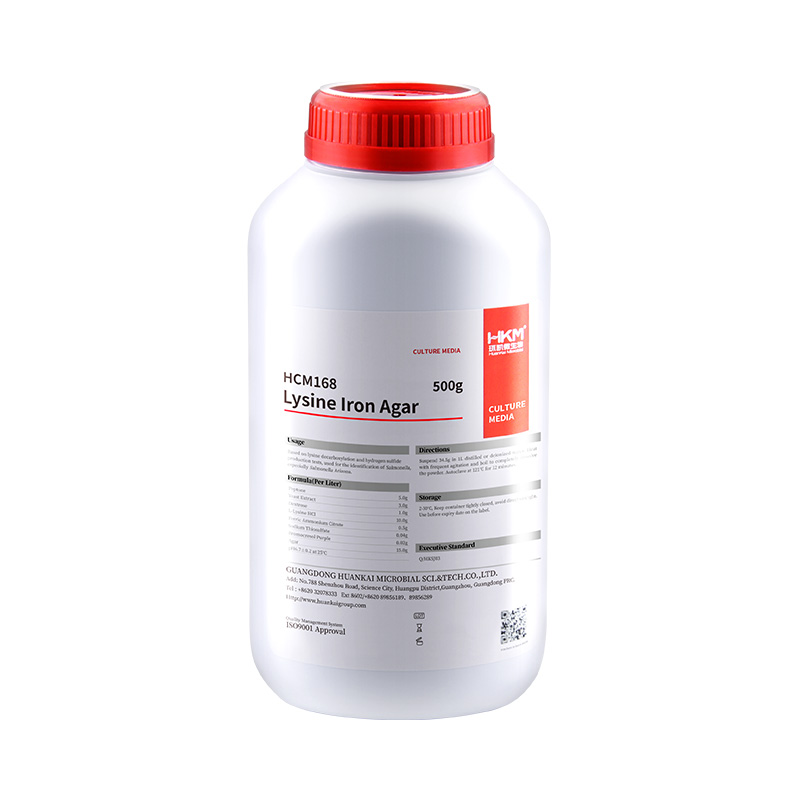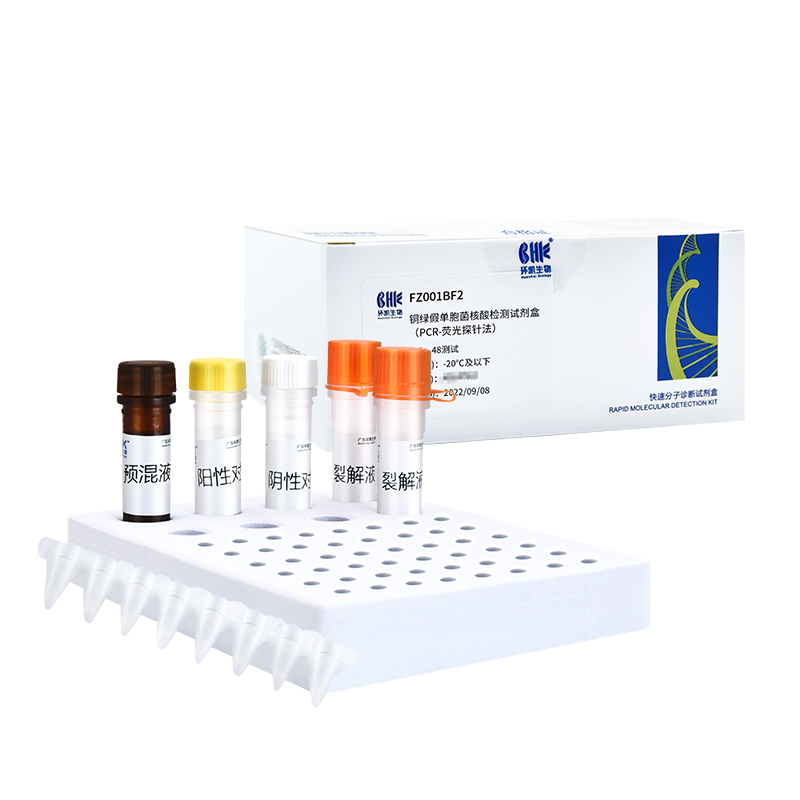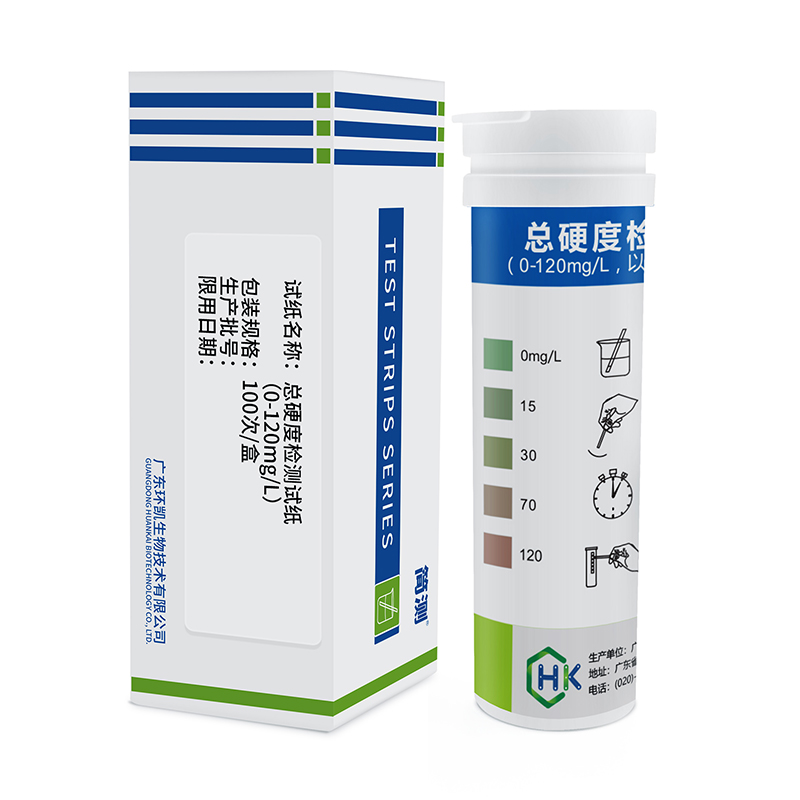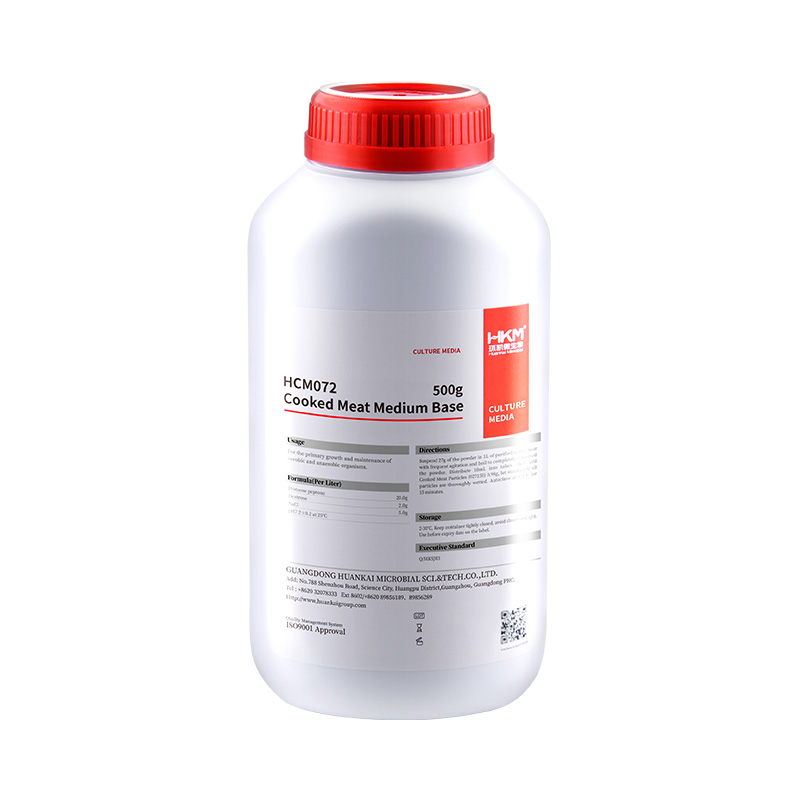HCM168 Lysine Iron Agar
$1,120-1,700
Product No.Product CategorySpecificationHCM168Dehydrated Culture Medium500g/bottle Intended Use Based on lysine decarboxylation and hydrogen sulfide production tests, used for the identificat……
Introduction
| Product No. | Product Category | Specification |
| HCM168 | Dehydrated Culture Medium | 500g/bottle |
Intended Use
Principle and Interpretation
Dextrose serves as a source of fermentable carbohydrate. Peptone serves as a source of nitrogen. Yeast Extract provide vitamins and growth factors. The pH indicator, bromocresol purple, is changed to a yellow color at or below pH 5.2 and is purple at or above pH 6.8. Ferric ammonium citrate and sodium thiosulfate are indicators of hydrogen sulfide formation. Lysine is the substrate for use in detecting the enzymes, lysine decarboxylase and lysine deaminase.
Formulation
| Ingredients | /liter |
| Peptone | 5.0 g |
| Yeast Extract | 3.0 g |
| Dextrose | 1.0 g |
| L-Lysine HCl | 10.0 g |
| Ferric Ammonium Citrate | 0.5 g |
| Sodium Thiosulfate | 0.04 g |
| Bromocresol Purple | 0.02 g |
| Agar | 15.0 g |
| pH 6.7±0.2 at 25°C | |
Preparation
Quality Control
Cultural characteristics after 18-48 hours at 33-37°C. (Growth evident by turbidity)
| Quality control strains | Growth | Reaction Slant/bottom | H2S |
| Salmonella typhimurium ATCC14028 | Good | Red purple/Red purple | + |
| Salmonella arizonae CMCC(B)47001 | Good | Red purple/Red purple | + |
| Proteus mirabilis CMCC(B)49005 | Good | Red/yellow | – |
| Shigella flexneri ATCC12022 | Good | Red purple/yellow | – |
Storage and Shelf Life
Keep container tightly closed, store in a cool, dry place, away from bright light.
Use before expiry date on the label.
Precautions
1. When weighing the dehydrated medium, please wear masks to avoid causing respiratory system discomfort
2. Keep container tightly closed after using to prevent clumping.
Waste Disposal
Microbiological contamination was disposed by autoclaving at 121°C for 30 minutes.
Revision
On August 1, 2024
References
Edwards, P. R. , & Fife, M. A. . (1961). Lysine-iron agar in the detection of arizona cultures. Applied Microbiology, 9(6), 478.




